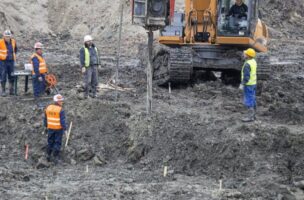UNDERSTANDING SOIL MECHANICS IN GEOTECHNICAL ENGINEERING
Understanding Soil Mechanics in Geotechnical Engineering
Soil mechanics is a fundamental discipline in geotechnical engineering that plays a crucial role in the design and construction of civil engineering projects. It involves the study of the physical properties and behavior of soil, which are essential for ensuring the stability and safety of structures built on or in the ground. Here, we delve into the key points of understanding soil mechanics in geotechnical engineering.
1. Soil Composition and Types
Understanding soil composition is the first step in soil mechanics. Soil is typically composed of mineral particles, organic matter, water, and air. The distribution and type of these components vary, leading to various soil classifications, such as sand, silt, clay, and loam. Each type has distinct properties that impact its behavior under different loads and conditions.
2. Soil Properties
Several key properties characterize soils, including:
- Particle Size Distribution: Soil particles vary in size, ranging from gravel to sand to silt to clay. This distribution determines soil texture and influences properties like permeability and shear strength.

- Porosity: Porosity measures the void spaces between soil particles, affecting water retention and drainage. High porosity allows for better drainage, while low porosity can lead to waterlogged conditions.
- Permeability: Permeability refers to a soil’s ability to transmit water. It depends on particle size and packing. Coarse-grained soils like sand have high permeability, whereas fine-grained soils like clay have low permeability.
- Compaction: Soil can be compacted to increase its density and strength. Proper compaction is critical for supporting structures and preventing settlement.
- Shear Strength: Shear strength measures a soil’s resistance to deformation when subjected to lateral forces. It is vital for stability analysis in foundations and slopes.
3. Soil Behavior
Soil behaves differently under various conditions:
- Saturated vs. Unsaturated: Saturated soil has all voids filled with water, while unsaturated soil has air-filled voids. Understanding their behavior is crucial for stability assessments.
- Consolidation: Over time, soils may undergo consolidation, causing settlement in structures. Proper assessment and mitigation strategies are necessary to prevent excessive settlement.

- Liquefaction: Certain soils can liquefy during seismic events, losing their strength temporarily. Recognizing susceptible soils and designing accordingly is essential for earthquake-resistant structures.
4. Soil Testing
To understand soil properties accurately, engineers conduct various tests:
- Soil Classification Tests: These tests determine soil type and classification, helping engineers select appropriate construction methods.
- Proctor Compaction Test: Used to determine the optimal moisture content and maximum dry density for compaction.
- Triaxial and Direct Shear Tests: Assess soil’s shear strength and behavior under stress.
- Permeability Tests: Determine a soil’s ability to transmit fluids.
5. Foundation Design
Soil mechanics is critical in foundation design. Engineers must consider soil properties, bearing capacity, settlement, and lateral stability when designing foundations for buildings, bridges, and other structures. Proper foundation design ensures long-term stability and safety.
6. Slope Stability
Understanding soil behavior is essential in assessing the stability of slopes and embankments. Engineers analyze factors like slope angle, soil type, and water content to prevent landslides and erosion.
7. Environmental Impact
Soil mechanics also plays a role in environmental engineering. It helps assess soil suitability for waste disposal, groundwater contamination risks, and the stability of dams and levees, which are vital for environmental protection.
In conclusion, soil mechanics is a fundamental field in geotechnical engineering. Engineers must have a comprehensive understanding of soil properties and behavior to ensure the safe and efficient construction of infrastructure projects. Soil testing, foundation design, slope stability analysis, and consideration of environmental impacts are all essential components of this discipline, contributing to the success and longevity of civil engineering projects.


